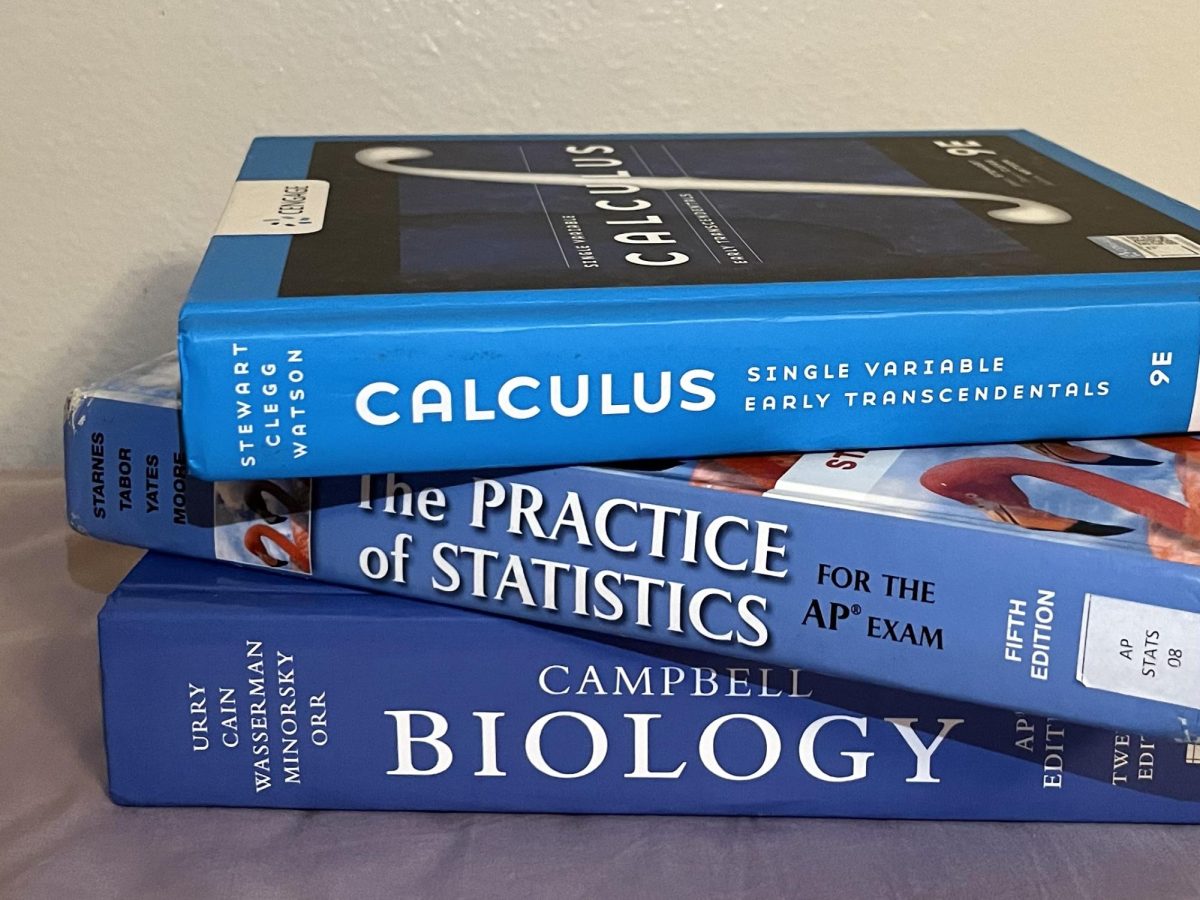As Donald Trump took the oath of office for a second term, social media erupted—not just with celebration from his supporters but also with outrage over his immediate executive actions and debates over what his presidency would mean for democracy in the years ahead.
But just as importantly, his swift return to power also exposed the Democratic Party’s failures, from weak messaging to disconnected leadership that left Kamala Harris with little chance of victory.
Donald Trump has won the 2024 presidential election, defying polls and expectations much like he did in 2016. The day following the election was notably subdued for many left-leaning Webb students. Those who had largely anticipated a different outcome found themselves grappling with unexpected results. Conversations were muted, and many were uncertain about how to process and discuss the election.
“I’d say the atmosphere at school was pretty somber and sad,” Marc Zambrano (‘26) said. “Teachers and students were asking each other how everyone was feeling, and each class had a level of sadness and silence. I saw many people in tears as well.”
The 2024 election, widely expected to be a tight race potentially decided by recounts, instead resulted in a sweeping red wave that left Democrats reeling.
The election saw a red shift in voting patterns: Latino men, who had been gradually shifting toward Trump since 2016, fully broke in his direction, while Latina women favored Harris by narrower margins than they had supported Clinton or Biden. Democrats also saw declining support among young voters, a group that typically leans heavily in their favor.
“I would want to see new people,” Marc said. “The reason why [the Democratic Party] has not been able to get a lot of young voters is because they don’t have younger people running.”
Trump regained full strength in rural areas, where he had lost some support in 2020, and solidified his popularity. While Trump successfully held onto his core voter base, the Democrats lost 10 million disappointed supporters.
“[Kamala Harris’s] target audience was young people and those her campaign aimed to serve: LGBTQ+ people, people of color, and people of lower socioeconomic classes,” Lucci Troendle (‘26) said. “I think she got those votes, but she didn’t have as much support from people in power.”
Roughly three-quarters of voters said they were voting to support their candidate rather than oppose their rival, with those motivated by support largely backing Trump and those voting in opposition rallying behind Harris.
“Kamala’s campaign was mostly centered on being anti-Trump, which was effective for some people, but it also undermined her ability to talk about other key issues,” Brianna Stodghill (‘26) said.
Kamala Harris’s entry into the presidential race brought in much-needed energy, reviving hope among Democrats who had lost confidence in Biden’s campaign. Younger and more dynamic, she brought renewed momentum, making many believe the party finally had a strong contender against Trump.
“She represented something new for this country—a woman of color as president, and that’s not something people expect,” Brianna said. “I felt encouraged by that.”
Joe Biden’s reluctance to step aside earlier, despite his promises of being a transitional figure, left Kamala Harris with only 107 days to mount her campaign—an almost insurmountable disadvantage against Trump’s nine years of preparation.
“To start off, she didn’t have a strong base,” Marc said. “She started running really late compared to other candidates.”
Instead of playing to her strengths, Harris became a continuation of Biden’s presidency, carrying the weight of his unpopularity, economic challenges, and policy failures.
“If you compare Trump as a Republican leader and Biden as a Democratic leader, Trump seemed much more aggressive and focused on forcing change quickly, even if it’s change I don’t agree with,” Lucci said. “Biden, on the other hand, feels a little more relaxed and less aggressive.”
Had Biden stepped down earlier, the election’s outcome could have been different. Throughout his presidency, even Democratic supporters questioned his ability to effectively perform his duties, let alone run a reelection campaign.
“Especially with the way people reacted to Biden and how the first debate went, I was relieved when [Kamala Harris] stepped in,” Brianna said.
In her campaign, Harris focused heavily on social issues, such as reproductive rights and inequality, yet neglected pressing economic concerns like inflation and the cost of living. Swing state voters overwhelmingly cited the economy as their primary concern, and yet, Harris failed to deliver a comprehensive economic plan.
“When I think about her campaign, the economy wasn’t one of the first things that comes to mind,” Brianna said. “This was one of Trump’s strongest points: he hammered it over and over again. If she wanted to counter his argument, she needed to be much stronger on that front, and I don’t think she was.”
Her record on immigration also proved to be a significant liability. Harris presided over record-breaking migrant encounters, a stark contrast to Trump’s hardline policies. Whether moral or not, Trump’s decisive stance on immigration gave him an edge over Harris’ perceived inaction.
“Kamala Harris didn’t ignore immigration, but it wasn’t a major focus,” Brianna said. “Meanwhile, Trump capitalized on it, making it one of his central talking points. [Trump] created fear around immigration, and since she didn’t directly counter his claims, it made it harder for her to change people’s minds.”
Harris’s campaign leaned heavily on celebrity endorsements and polished but superficial messaging. In contrast, Trump’s confidence in his values, however extreme or polarizing, stood in stark opposition to Harris’ cautious and often indecisive approach.
“Trump is so confident in his values and stances; they may be really extremist, at times just wrong and full of prejudice, but it’s a stance, and that’s something that people can get behind,” Leia Albornoz (‘25) said. The Democratic Party lacks that completely.”
Trump’s supporters rallied behind his clear stances, while Harris left undecided voters frustrated by her lack of clarity.
“Whatever you believe in, you need to take a stance,” Leia said. “You need to make a choice, and Kamala wasn’t making a choice. She was just following whatever Biden was doing.”
This lack of conviction was not just a flaw in Harris’s campaign but also reflected a deeper issue within the Democratic Party as a whole. Struggling with internal divisions and legislative gridlock, the party has repeatedly failed to translate its progressive ideas into impactful policies.
“I think the Democratic Party doesn’t necessarily have progressive enough views to where they could get anything done,” Leia said. “Everything that they do falls flat.”
Despite controlling both the White House and Congress at points, key initiatives such as voting rights expansion, immigration reform, and climate action were stalled due to opposition from centrist Democrats and an increasingly obstructionist Republican Party. The Biden administration made progress on infrastructure and healthcare subsidies, but efforts to pass sweeping social policies—such as the Build Back Better Act, which aimed to expand childcare, healthcare, and climate initiatives—were watered down due to party infighting, ultimately resulting in a much smaller package, the Inflation Reduction Act, that left out many of its key proposals.
The party’s vague and inconsistent response to major issues like inflation and immigration alienated portions of its base. Rather than taking a firm stance or proposing bold solutions, Democratic leaders often offered superficial statements that failed to address the concerns of those demanding concrete action.
Without a clear, unified vision and the ability to push through substantial reforms, the Democrats struggled to maintain enthusiasm among their own supporters. Longtime party leaders represented an aging establishment, which increasingly disconnected the party from younger and more progressive voters.
“There’s a disconnect between our generation and the people in charge of the [Democratic] Party,” Brianna said. “With voter turnout dropping, they need to emphasize the real root issues, why they matter, and how ideologies differ without alienating people. Right now, they’re struggling to appeal to different groups, which is worrying.”
If Democrats hope to regain power, they must move beyond performative politics, address real concerns with conviction, and rebuild trust with the voters they lost. Without a bold, unified vision, 2024 may not be a singular failure, but the start of a long-term decline.







![Many Webb students spend their free time in the library watching a popular TV show like Riverdale and Euphoria. “Based off what I’ve seen, like in Euphoria, because the actors are older, they don't showcase an actual high school life properly,” Sochika Ndibe (‘26) said. “Since [the actors] are older [and] playing a teenager, from a girl’s perspective, it is going to make you think you should look more developed at a young age.” The actor, who plays Veronica Lodge, was 22 years old at the time of filming.](https://webbcanyonchronicle.com/wp-content/uploads/2025/03/Antecol-Media-affects-how-society-functions-graphic-1200x900.png)







